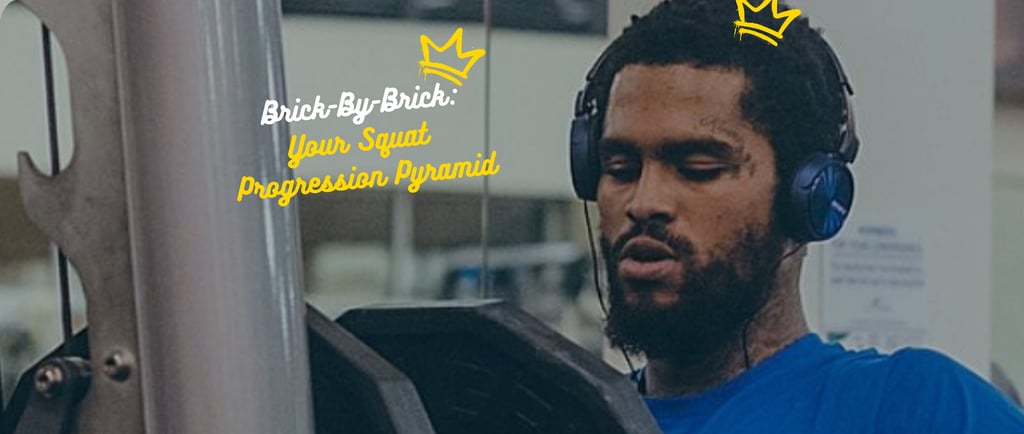Brick-By-Brick: Your Squat Progression Pyramid
The squat is more than a gym move — it’s a foundation for movement, power, and performance. In this blog, we break down a step-by-step squat progression that helps artists build strength, posture, and breath control for life on stage and on tour. Start where you are, and level up with purpose.
SQUATSTRENGTH TRAINING
dj miss kittie
5/20/20252 min read


Squat Movement Pattern Progression: Build Strength that Supports Your Art
The squat isn’t just an exercise — it’s a foundational movement that builds balance, posture, and power for performers both on and off the stage.
Whether you're lifting gear, dancing under bright lights, or staying resilient through travel and long rehearsals, progressing your squat keeps your body ready for it all.
Here’s a breakdown of the full squat progression pyramid and why each step matters for performers.
Step 1: Bodyweight Squat or TRX Squat – Learn the Pattern
Teaches proper squat mechanics without added load
Improves mobility, balance, and coordination
TRX adds assistance for depth and alignment
You can also use a box to help reinforce proper depth and movement mechanics
Why It Matters for Artists:
Builds a foundation of control for movement-based performance
Helps prevent knee, hip, and back pain from the start
Step 2: Goblet Squat or Landmine Squat – Add Load, Maintain Form
Teaches bracing and core engagement with light resistance
Landmine option adds stability and encourages upright posture
Why It Matters for Artists:
Develops total-body control and stamina
Improves breathing coordination under light load
Step 3: Frankenstein Squat – Challenge Posture and Mobility
Barbell rests on shoulders with arms extended forward
Enhances thoracic spine mobility and core control
Why It Matters for Artists:
Great prep for front squats
Encourages upright positioning, crucial for breath control and stability
Step 4: Zercher Squat – Build Bracing and Hip Strength
Bar held in the crook of the elbows
Requires strong core and upper back engagement
Greater hip flexion than other variations
Why It Matters for Artists:
Strengthens midline stability for lifting, movement, and posture
Reinforces bracing for performance longevity
Step 5: Front Squat – Strengthen Core and Quads
Bar rests on front delts, demanding upper back and core stability
Encourages upright posture and breathing under pressure
Why It Matters for Artists:
Helps manage stress under load while protecting the spine
Enhances diaphragm control and mobility
Step 6: Back Squat – Load the System
Classic variation for total-body strength
Requires shoulder mobility, core engagement, and balance
Why It Matters for Artists:
Builds strength and resilience across the entire posterior chain
Supports endurance for long, demanding sets or tours
Step 7: Low-Bar Back Squat – Maximize Load, Strengthen the Chain
Bar sits lower across rear delts, increases hip flexion and load potential
Emphasizes glutes, hamstrings, and low back
Why It Matters for Artists:
Strengthens the power centers of the body
Demands core engagement and stability under pressure
Progression = Performance
Mastering the squat pattern step by step creates a foundation for movement, stability, and power that carries over to your performance and lifestyle. Start where you are. Progress with purpose. And let your strength support your stage.
